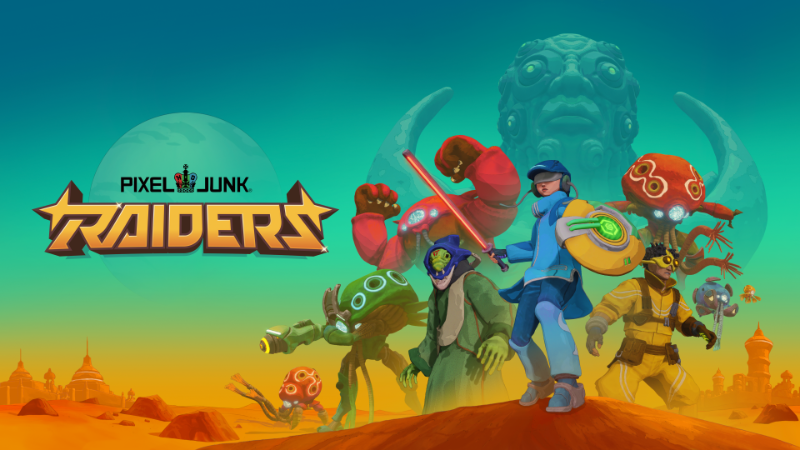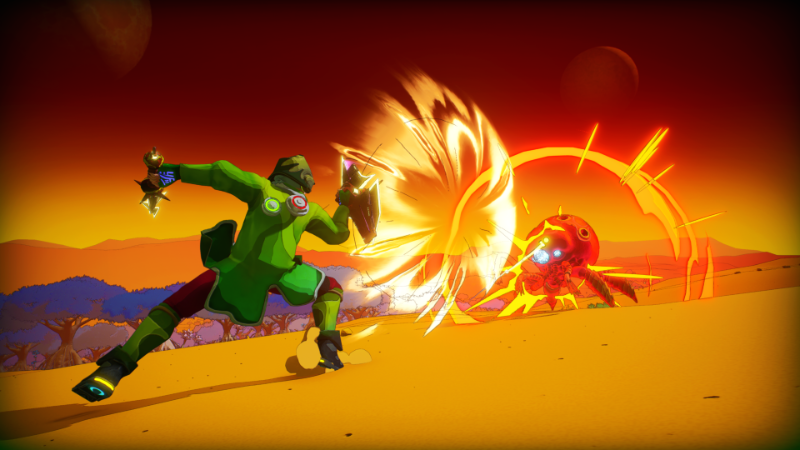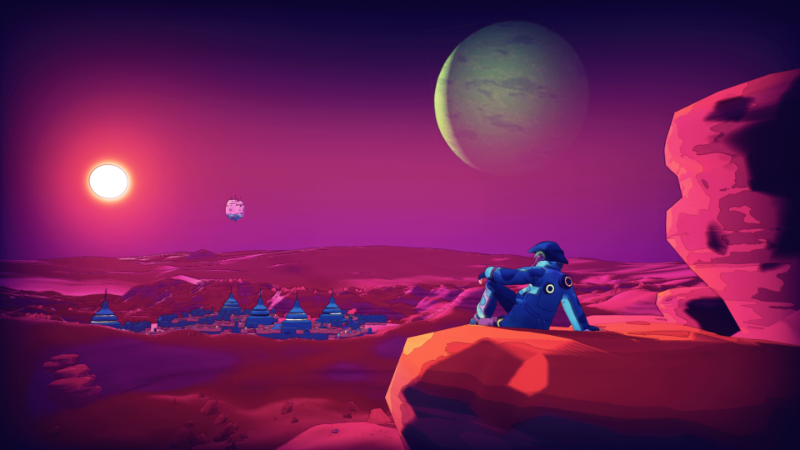Google Stadia hasn’t been in the headlines for the right reasons when it comes to launching games lately. Whether it’s the report that Ubisoft and Take-Two were paid more than handsomely for recent ports, the announcement of the first-party games division closing permanently, or apparently canceled deals with the likes of Kojima Productions, it’s been a rough few weeks.
But the Stadia team has promised third-party games will continue, and a new and exclusive example, PixelJunk Raiders, is out now for Stadia Pro members. Sadly, this new entry in the genre-agnostic PixelJunk series isn’t the killer app that still eludes the tangerine-tinted cloud platform.
PixelJunk Raiders is okay and shows flashes of something greater. Still, its gameplay loop feels decidedly dated right away, and despite a cool exclusive feature only Stadia can pull off, it doesn’t feel like an alien world much worth exploring.
PixelJunk Raiders Review: One Small Step for Stadia
In the third-person roguelike melee-driven action game PixelJunk Raiders, a “Quantum Anomaly” has caused a crack in space, and through it come pouring aliens of all shapes and sizes. Early on, you’ll see a lot of squid-like aliens slashing or even shooting at you when they get close. Later on, giant sandworms and some Giger-inspired humanoids show up to disrupt the planet of Tantal, the cel-shaded, high-contrast home to helpless other lifeforms.
It’s your job as a mercenary to get boots on the ground and fight for their safety, clearing encampments of the volatile aliens and restoring peace to each area you visit.
Because each level is procedurally generated, piecing together various planetary parts to create each level, like loot, number of survivors, and enemy difficulty, you always have a general idea of what they’re getting into — even if failure may mean you don’t ever get back.
But this structure is also one of the game’s biggest letdowns, because no matter what a level looks like or how tough the threat may be, saving Tantalian survivors is routinely lacking. You don’t escort the survivors anywhere, you don’t enlist them to aid you in battle before sending them home, you don’t do anything really, except approach them and hold down a button when the immediate area has been cleared of enemies.
They just stand there, and because every mission besides the boss battles has to do with these survivors, it quickly becomes a chore to stick around.
PixelJunk Raiders is built like an arcade game, so there’s deliberately no narrative pull to these survivors. You don’t learn their stories. Even when they give you brief side quests before you can save them, those quests amount to going to a spot on the map and grabbing an item, which means periods of fighting enemies close to your survivors are broken up with periods of fighting enemies far away from your survivors.
That’s the sort of variety we’re talking about here.
It’s too bad these survivors prove to be such uninteresting subjects because some of the game’s systems are more enjoyable. Upgrades come early and often and in several varieties. You can unlock permanent ability changes like getting to recover your loot, a la a Soulslike, when you die, improving your max health, or adding new attacks to your melee arsenal. New cosmetics can be unlocked by completing contracts, though these only ever amount to saving a certain number of survivors. Stat increases are reset on death, but you otherwise keep what you’ve earned, so it’s one of the more forgiving roguelites I’ve played.
Weapon degradation means you’ll always be scrambling to stay ahead of alien hordes, and that part feels great. You’ll need to use everything in your environment, and what’s actually in your environment is affected by other players on Stadia. Using State Share, you can share a link to your procedurally generated level featuring all the traps and tools you’ve left behind, like mines, jump pads, and pockets of healing smoke.
It’s reminiscent of what Kojima called the debut of the “strand game.” However, what he, and PixelJunk Raiders, are really referencing is the asynchronous multiplayer from Dark Souls, where players who never meet one another can still aid each other on their travels.
It’s a fun idea, but it doesn’t make PJR‘s worst bits more enjoyable. The dashes between settlements to save 10+ survivors in each level are not any more exciting because someone left me some extra supplies. This does improve boss battles, at least.
These levels are typical, featuring bosses that need to be hit three times in between waves of smaller grunts, but loading up a boss battle with all sorts of assists and sending it to a friend has a lot of potential, if only because of the way it allows you to unload and almost speedrun these bosses.
Crowd control is the directive as levels get harder, and it doesn’t take long before they really test your mettle. This is the game’s best bit because even if the survivors aren’t interesting, at least the act of checking the box that says you saved them proves to be a real challenge. PixelJunk Raiders does get exciting when you’re hanging on to your last few hit points, hoping for a critical item that will help you clear the area of the final few colorful alien creatures.
A fun synthy soundtrack helps paint the game in its intended retro-pulp sci-fi aesthetic, though the barren worlds don’t provide the same punch. PJR is a lot more like Death Stranding than I expected in that way. It’s a lot of running across barren land from settlement to settlement, with little that matters in between and a lot of nonsense once you get there.
PixelJunk Raiders Review — The Bottom Line
Pros
- Challenging enemy encounters after some early breezes
- Fun retro sci-fi music sets the appropriate scene
- Good character progression split across several upgrade trees
Cons
- Central loop of saving survivors is a chore
- Boss battles stick to tropes
- Procedurally generated levels that don’t feel worth discovering
PixelJunk Raiders is almost a good game and certainly isn’t horrible, but its best bits, the roguelite systems and some tough melee battles, are still better done in other games in the genre, and those games aren’t built around saving survivors who behave more like statues.
With more variety in missions and scenery, this indie could’ve proven to be the killer app Google needs, but as it is, it’s merely one small step for Stadia and one giant leap for no one.
[Note: Google provided the copy of PixelJunk Raiders used for this review.]









Published: Mar 1, 2021 11:07 am